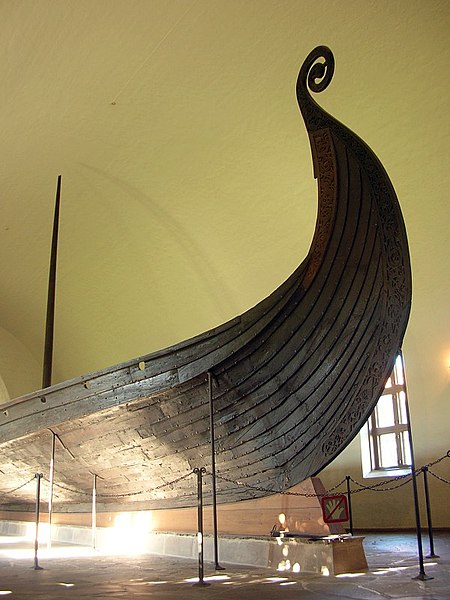The history of human settlement in what is present day Norway goes back at least 11,000 years, to the late Paleolithic. Archaeological finds in the county of Møre og Romsdal have been dated to 9,200 BC and are probably the remains of settlers from Doggerland, an area now submerged in the North Sea, but at the time a landbridge that connected the present day British Isles with Jutland. The Fosna-Hensbacka culture inhabited parts of Norway about 8300 BC to 7300 BC. Petroglyphs dating from the Neolithic Age (in Norway 4000 BC to 1800 BC) show scenes of hunter-gatherers. More permanent settlements developed during the Bronze Age (1800 BC to 400 BC) and Iron Age. The earliest runes (an inscription in North Germanic) that have been found were inscribed on an arrowhead dating from about 200 AD. Many more inscriptions appear until 800 AD; a number of small kingdoms developed during these centuries.
The period from 800–1066 saw significant expansion, and is referred to as the Viking age. During this period, Norwegians, as well as Swedesand Danes, traveled abroad on longships, as raiders, explorers, settlers and traders. By the middle of the 11th century, the Norwegian kingdom was firmly established, although there was still only a very rudimentary administrative framework. The Black Death arrived in Norway in 1349, killing perhaps half the population, after which Norway entered into a period of decline.
Between 1396 and 1536 Norway was a part of the Kalmar Union, and from 1536 to 1814 Norway was effectually a tributary to Denmark, named as the personal union Denmark–Norway. Denmark–Norway entered into an alliance with Napoleon, with the war leading to dire conditions and mass starvation in 1812. In 1814 Denmark–Norway was defeated in the Napoleonic wars and the king was forced to cede Norway to the king of Sweden in the Treaty of Kiel (January 14). Sweden and Norway adopted a loose union, in which Norway was permitted to maintain its own Constitution.
This period also saw the rise of the Norwegian romantic nationalism cultural movement, as Norwegians sought to define and express a distinct national character. The union with Sweden was dissolved in 1905. Norway remained neutral during World War I. Norway claimed neutrality again during World War II, but was occupied by German forces from April 9, 1940 until May 8, 1945.
Norway joined NATO in 1949 and in 1960 the European Free Trade Area as one of the seven founding members.[1] Two plebiscites to join the European Union failed by narrow margins in 1972 and 1994. Norway has been a close ally of the United States. Large reserves of petroleum and natural gas were discovered in the 1960s, which led to a continuing boom in the economy. Whaling was once an important industry and commercial fishing continues to be so.

No hay comentarios:
Publicar un comentario
Nota: solo los miembros de este blog pueden publicar comentarios.